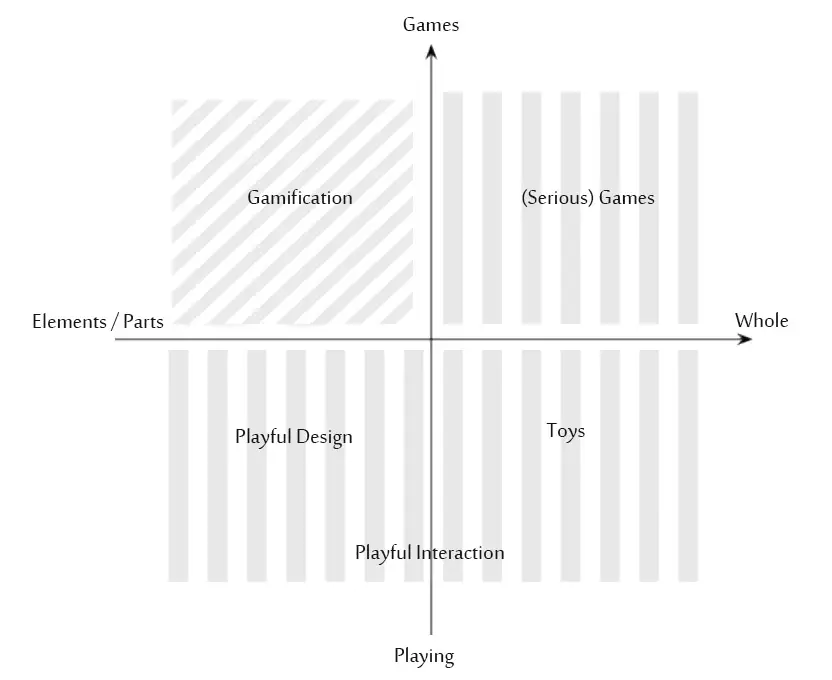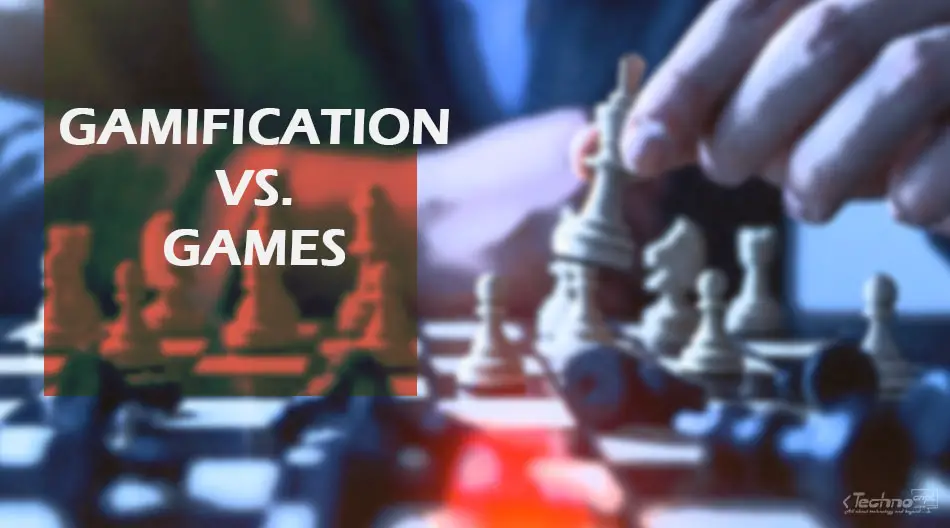A relatively new concept, Gamification is based on achieving goals using lessons derived from games, not using games themselves.
That being said, what is the difference between gamification and games? and how are they related to other game-derived concepts?
1. Overview
Due to the misunderstanding of the gamification definition, many stakeholders fail to achieve the intended interactivity of gamified applications. This is mainly because of the ambiguity of gamification and its relation to games and other related concepts.
We explore in this article the difference between gamification and games, along with their relation to closely related concepts such as Gamefulness and Playfulness.
2. Gamification and Playing Games
Gamification is basically related to “games“, not to the idea of “playing” games, and there is a big difference between these two last concepts.
On the first hand, games are dedicated systems, composed of clear rules. With the aim of all participants to compete and interact to achieve specific goals.
On the other hand, playing games refers to a much broader concept, that reflects a more flexible behavior and activity.
Hence, playing games includes games, but they both refer to different patterns of behavior, which can be encountered while playing video games.
3. Gamification vs. Serious Games
Another distinction must also be made between games and serious games.
Serious games are fully-fledged games, designed and directed to specific purposes other than pure entertainment. While gamification refers to adapting specific elements of the games.
Gamification theory, therefore, does not aim to create games outside the context of the targeted application, nor does it mean to design serious games. Instead, gamification uses a number of gaming elements of different levels of abstraction, with the aim of increasing user motivation and engagement within provided services.
4. Gamification vs. Games
According to the previous explanation, gamification and games are closely related but conceptually different terms.
To clarify the relationship between gamification and games, we outline in the following table the main similarities and differences between these two concepts.
| Criteria | Games | Gamification |
|---|---|---|
| Goals | Entertainment Clear and explicit goals, where entertainment is the primary goal. | Motivation The main goal is to motivate users and create an interactive process. |
| Rules and Structure | Clearly defined, but can expand to complex and complete systems. | Missions and challenges to be fulfilled, packed in a system of points and rewards. These tasks are not complete systems and, usually, don’t include complex rules and principles. |
| Cost | High design and development cost. | Relatively low cost. |
| Content | Essential, and fully adapted to fit the rules and objectives of the game. | Mostly independent of gamification, but it’s always better to be adapted to fit the gamification techniques. |
5. Gamefulness & Gameful Experience
In another context, “Gamefulness” is another concept related to gamification. It is described as the experiential and behavioral quality of a game.
This phenomenon is complementary to another one called “Playfulness“. Which is the quality of being fun and lively.
ِFurthermore, gamification also brings to light further concepts, such as: “Gameful Interaction” and “Gameful Design“. These concepts are distinctive and not precisely prescribed. Also, they are different from other previously established concepts, such as: “Playful Interaction” and “Playful Design“.
In this context, gamification must be distinguished from playfulness and playful design, and this is what represents a novelty in gamification applications.
Practically, gamified applications may lead to playful behavior. Just like video games, which may alternate between gameful and playful behaviors.
However, the main goal of gamification is to ultimately reach a gameful experience.
In the following figure, we illustrate the positioning of gamification and some related concepts according to two axes:
- Structural axis: from Elements to Whole.
- Interactive axis: from Playing to Gaming.

6. Game Elements
To better understand gamification, we need to explore the exact meaning of “Game Element“. We also need to distinguish it from “Game Design” and “Game Techniques”.
As mentioned previously, gamification refers to the use of only certain elements of games. These elements, when combined with game design, form what might be called gaming techniques.
Thus, this is the main design idea that distinguishes game techniques from game elements. However, the exact definition of game technique is relatively unclear, but we can define it as:
Game techniques are game components that comprise several rules and feedback loops, used to motivate players to interact with the game.
There are many examples of game techniques we come across in different games, such as points, bonuses, levels, badges, leaderboards, etc. To read the full list of game techniques, please refer to this article.
7. Conclusion
In this article, we explored in detail the connection between gamification and games. In addition to the difference between these concepts, and their relation to other linked terms.
We can conclude that gamification is different from games, as it is based on achieving goals using techniques derived from games, not by using games themselves. Also, the introduction of gamification has led to the emergence of new and derived terms, which open the door for future exploration and research, such as gamefulness, gameful design, and gameful interaction.

